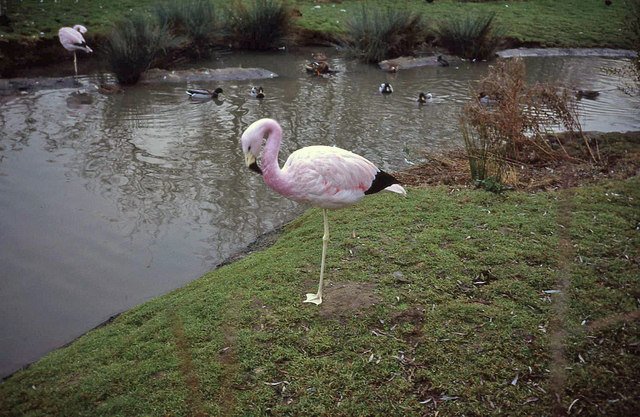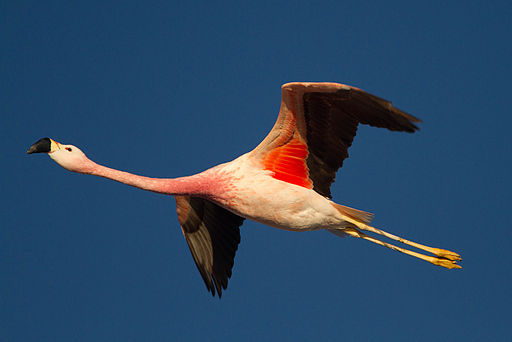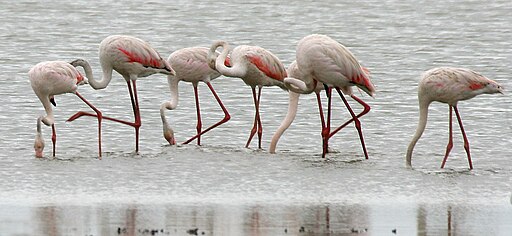Today we are going to talk about baby flamingos or flamingo chicks. Before there can be a chick however the parents have to mate and build a nest. There are several YouTube videos that show the flamingos hatching and feeding their chicks. I gave you two links to check out.
I am going to share with you several books today. First I will share two that read like a picture book, but are non-fiction.
Mud City by Brenda Z. Guiberson is a story telling about a chick hatching in the Bahamas. This story starts with the mother sitting on the nest. It describes the flamingos sitting on their nests to protect the eggs from the hot sun. It also tells us how the parents roll the eggs and take turns on the nest. The flamingos in this area build their nests on high ground near the mangrove trees. A bad storm comes and much of the nesting area is destroyed, but the nest this story is about is not. Finally after four weeks, a fluffy white chick hatches. Both parents have glands that make a red liquid of fat and protein to feed the chick. For three days the parents will stay near the nest to protect the chick and on the fourth day the baby will try going for a swim. The parents will fly out to other salty lakes for food. They sometimes migrate hundreds of miles during the night before returning to feed the chick. At five weeks the chick has new grey feathers. His beak is now long and curved and he begins to eat like the adults. At some point the parents and all the adults leave the salty lake due to lack of rain and thus lack of food. The flamingo "chick" tries to fly and slowly succeeds at it. He will leave to find food as well. He will continue to return to the mud city of his birth with the other young flamingos still inbetween food searches. Over the next three years the young flamingos grow tall and more pink. At five years the flamingo is an adult. He will begin the courtship dance looking for a mate. He will return to the mud city of his birth to start his own family.
Flamingo Sunset by Jonathan London is a story of flamingos in Bonaire. It begins in the spring with a couple building their cone like nest and laying a single white egg. Once the chick is born he stands up and falls and stands up and falls and makes a squeaky, puppy-like bark. At a week old the baby watches his mother and father feed and tries it himself. They survive a thunderstorm with the parents protecting the chick. Then the time comes when his pink feathers are in and it is time to fly with the other flamingos making a flamingo sunset.
Next we will look at A Flamingo Is Born by Max Alfred Zoll.
This book has black and white photographs on the interior. This book focuses on flamingos that live in the West Indies and focuses on the birth of one chick a female. Flamingos build their nests in the water away from enemies on land. Their nests are made of mud and look like muddy termite mounds. It starts with a female finding a mate and includes a picture of the birds mating. About two days after mating, the female will lay one fertilized egg in the nest. Then the parents will take turn protecting the egg. This book says they sit on it to keep it warm or to incubate it. Other books say they sit on the egg to keep them out of the too hot sun. The egg will hatch in about a month.
 |
| Caribbean Flamingos at Stone Zoo |
While incubating the egg the parents will turn the egg to exercise the chick. After four weeks, the baby will being to peck at the shell. It can take a whole day before the chick is finally out of the egg. After the chick is born the mother may go for a cool swim and to find food. The baby is born with a straight bill. The bill will grow more curved so the chick will be able to feed itself soon.
 |
| Flamingo Chicks at Stone Zoo |
After four days the chicks will want to go exploring. She will call to her mother when she is hungry and will not go too far yet. The mother will clean the nest of feathers which lined it when the chick was born. The chicks legs will grow stronger and stronger until the chick is able to walk well. Before being able to stay in the water a long time the chick will spread oil that is made on an area its back near its tail. The chick will spread the oil with its beak. This oil will keep the feathers from getting wet.
The next book we will explore is A Flamingo Chick Grows Up by Joan Hewett. In this book they look at a group of flamingos on a salty lake and focus on one chick the author calls Puck. In this book they discuss the father's role of sitting on the egg and watching over the chick.The mother feeds the chick a kind of milk called crop milk that she has in her stomach. She brings the cop milk into her beak and drips it into Puck's. At three days Puck tries to walk on his webbed feet. He takes a few wobbly steps. After only one week, he is steady on his legs and leaves the nest. The chicks go group together some times and other times they want to be with their parents. Chicks' legs grow quickly. Puck is born white but grey feathers begin to grow in as a few weeks and his beak begins to curve. At five weeks, Puck's beak is fully formed and he is able to eat completely on his own. At seven weeks, he spends his days with other chicks. At three months old Puck begins to get longer grey feathers with a touch of pink. The flying feathers are long and black and have grown in by winter.
 |
| Flamingo Chicks at Stone Zoo |
Finally I am going to share a third book called Flamingos by Cecilia Pinto McCarthy. This book is a lovely picture/simple reader about flamingos and has a section taking you through the life from chick to adult of a flamingo. It is this section that I am sharing information.
 |
| Caribbean Flamingo Nests at Stone Zoo |
Flamingos nest with a colony (group). The nests are cone-shaped and made of mud. They are up to 12 inches high. The parents take turns sitting on the nest and in 27 to 31 days a gray or white chick hatches. The adults feed the chick a red "milk" called crop milk that is made in their crop or part of a bird's throat.
 |
| Parent feeding chick crop milk |
After three years a chick's feathers will turn completely pink. Flamingos live for 20 to 30 years and healthy flamingos have pink feathers for life.
So that is our look at flamingo chicks!! I hope you enjoyed it! We will have some baby flamingo and adult flamingo crafts soon. We just did not get them done with the start of school.














































